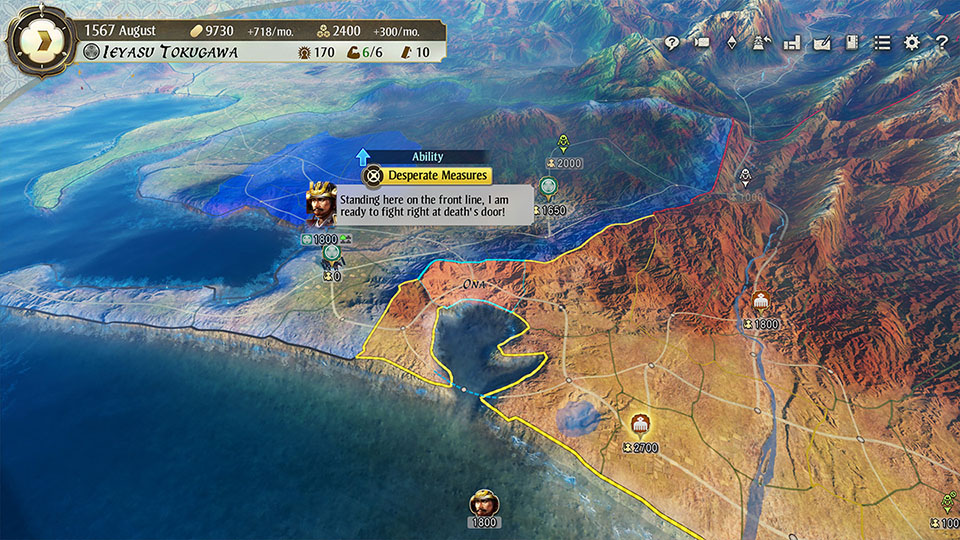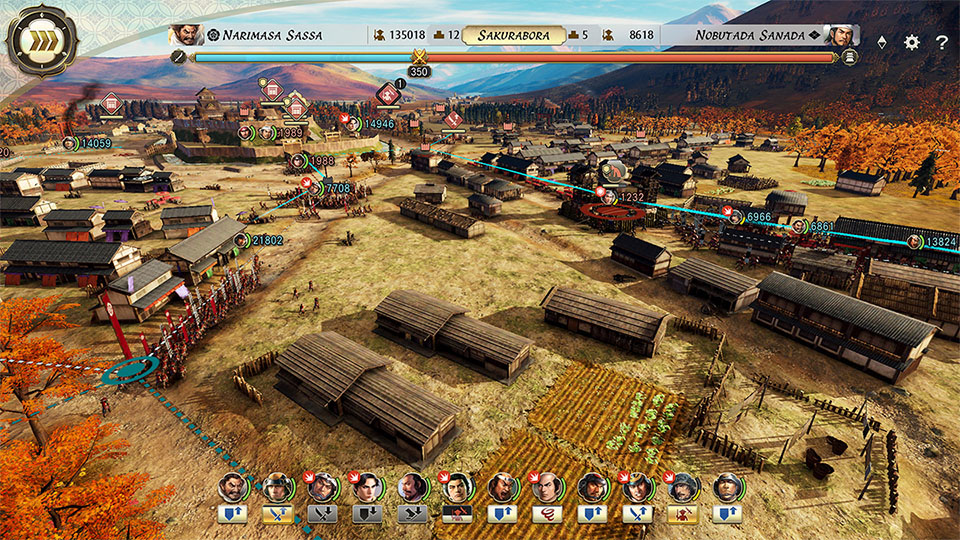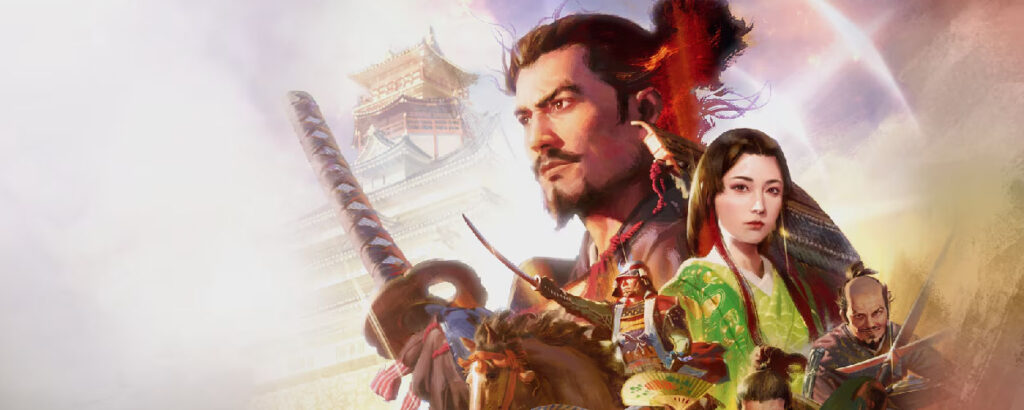Nobunaga’s Ambition is one of the OG historical strategy game series, boasting its own storied history that stretches back 40 years across myriad hardware generations, continually adapting and reshaping itself for new technology. With each new instalment, KOEI reshuffles its extensive deck of ideas and innovations, creating a web of interlocking systems that simulates Daimyo decision-making in Sengoku-era Japan.
Also referred to as the Warring States period, this was a time of constant turmoil with power-hungry warlords going head-to-head in a bid to expand their territory. Players are thrust into the very heart of this tumultuous conflict, each campaign centred on the rise of a particular clan or the lead up to one of the era’s most decisive battles. Choosing to lead one of the game’s many factions, it’s your job to not only manage domestic affairs, but also military actions, and diplomacy.
If you’re new to the series, then there’s plenty you’ll need to get to grips with. Grand strategy games don’t hold back when it comes to info-dumping and bombarding players with menus and map overlays – Nobunaga’s Ambition: Awakening is no exception. These will be even tougher to decipher if you’re not overly familiar with this period of history as you juggle the names of countless clans, officers, and provinces with more than a few tongue twisters.
Even if you know your Akechis from your Ashikagas, the game’s historical exposition can be tough to parse at times. While there’s a predominant focus on your chosen clan and how they interact with their neighbours, Awakening attempts to paint a broader picture of the conflict, interjecting with cutscenes and dialogues that – while important to the overarching Sengoku timeline – tend to indulge in the dramas of other clans who may only play a periphery role in your campaign.
Your main objective – as it always has been in Nobunaga’s Ambition – is the unification of Japan. This requires more than simply sledgehammering your way across the country and subduing rival clans to become Shogun. A good Daimyo will divide their attention between planning military campaigns, negotiating with other warlords, and keeping their own house in check.
One major focus in Nobunaga’s Ambition: Awakening is the new Dominion feature that was always destined to divide the series’ fanbase. It’s a simple concept, really. To help eliminate a lot of the micromanaging and busywork found in grand strategy titles, Awakening entices players to hand over occupied castles to their retainers, allowing them to manage these territories as they see fit.
Thankfully, your AI officers are more than capable, the Dominion system reflecting the historical reality of Daimyo needing to delegate as they oversee vast territories. By zooming in on the dynamic campaign map, you’ll see farms, mines, and other facilities appear over time without the need to build them yourself. However, this automation doesn’t necessarily make the game any more approachable. Taking tasks off the player’s hands can actually be counterintuitive towards their understanding of how the game works and helping them overcome its steep learning curve. It contrasts the onboarding experience of earlier instalments, namely Sphere of Influence, which offered an engaging (if sometimes exhaustive) tutorial.

Naturally, mouse and keyboard is the optimal way to play, but gamepad controls are dependable enough, allowing you to quickly access actions via a radial menu – as well as select units and sift through menus – with relative ease. The campaign map is also simple to navigate, presenting more detailed information on provinces, counties, and unit movements the closer you zoom in.
Awakening’s battle system has also changed. When two or more officers clash, their unit icons will bump into each other as their troop numbers deplete in real-time, the larger army usually having the advantage as they whittle down their opponent. However, when it comes to key engagements, players can transition to a full 3D battlefield, giving them more direct control. Each map presents a network of pathways units can move along, with control points and other strategic positions to capture, giving your army a morale boost in the process. It’s not a terribly dynamic system, encouraging players to outflank opponents to catch them in a pincer formation while trying not to have the same happen to them. By gauging the stamina of individual units, you can determine who to engage and when, utilising officer abilities to gain temporary combat bonuses or perhaps unload a salvo of bullets into the ranks of a charging enemy.

The presentation does little to capture the cinematic marvel of these epic samurai showdowns. You can zoom in to get a closer look at your troops though battles aren’t as involved as, say, a Total War game. Instead, wars are mostly fought by watching icons move around a campaign map while keeping an eye on their key stats.
Still, Nobunaga’s Ambition Awakening isn’t a drab looking game. There’s a great aesthetic to the massed web of menus, structuring information in a way that is easy to digest while pleasing to look at. Modern, well-spaced layouts spliced with Japanese elegance and Sengoku-era imagery. As always, the music in Nobunaga’s Ambition is a delight and the sheer number of unique officer portraits helps ramp up the immersion even if they’re mostly static, occasionally blurting lines of non-voiced dialogue at one another.


